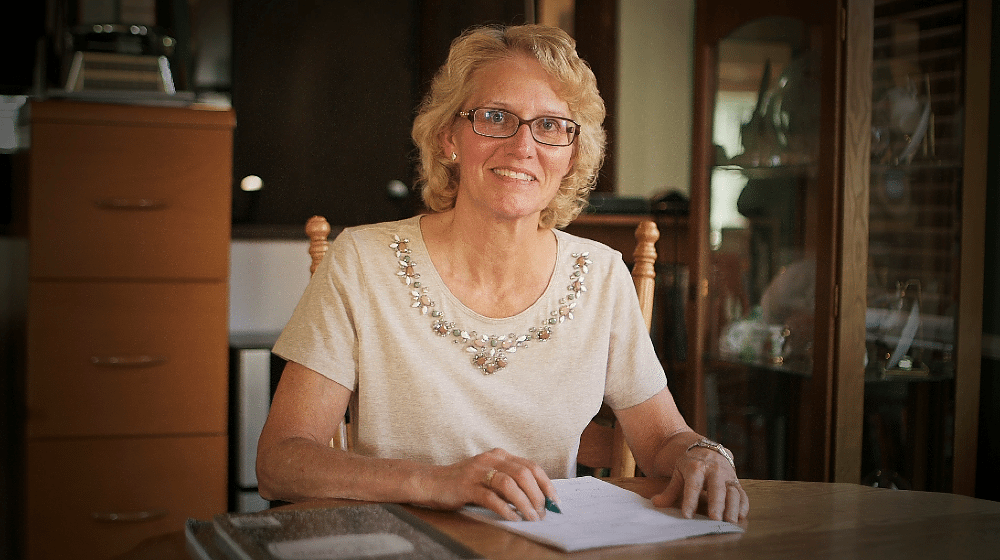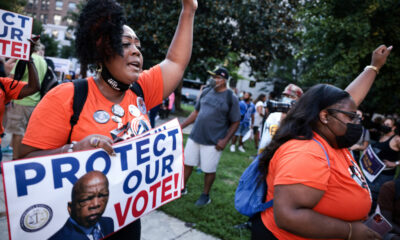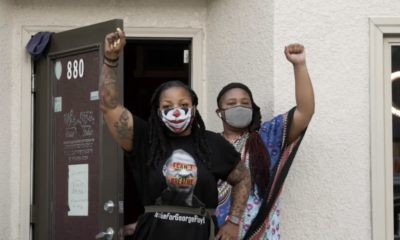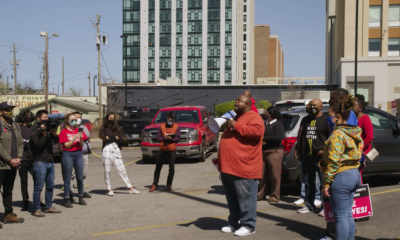
California Comeback: For Teachers, Invisible Scars and Wary Hopes
In the spring of 2008, Underwood was an eager and popular young assistant band director at a high school in Moreno Valley, a suburban enclave in Riverside County, but the first clouds of what would soon be called the Great Recession were gathering in New York — and were clearly visible to Underwood.
“I had known it was coming,” remembers Alan Underwood.
In the spring of 2008, Underwood was an eager and popular young assistant band director at a high school in Moreno Valley, a suburban enclave in Riverside County, but the first clouds of what would soon be called the Great Recession were gathering in far off New York — and were clearly visible to Underwood. The music teacher, only four years out of college, decided to check in at the Val Verde Unified School District offices for reassurance.
“They’re like, ‘Hey, you have a job for as long as you want in the district,’’’ he says in a phone call.
By October, however, the Dow Jones Industrial Average had plunged 18 percent in a single week, and California’s nearly 300,000 public school teachers found themselves in the full fury of a financial storm that saw the state teetering on the precipice of a record $28.1 billion deficit. It would get far worse.
About This Series
“It started to become a little bit clearer that things weren’t great,” Underwood dryly recalls. “I wore a pink shirt the day they were handing out the first round of pink slips. This was just the reality: They were going to have to cut somewhere, and they weren’t going to cut English and math teachers.”
Underwood was right. He, along with every music teacher in Val Verde Unified except for one was pink-slipped — three high school teachers, six middle school and 13 elementary school teachers. The entire elementary school music program was eliminated and middle school music electives were cut back to one.
Throw a dart at a California Department of Education map and it will be impossible to hit a school and not hear similar stories. Until 2008 most California teachers believed teaching was recession-proof when they chose to enter the profession.
But by 2012, the state’s general fund revenues had plummeted by more than $40 billion. That resulted in a debilitating 14 percent cut at the district level and, according to the Census Bureau’s Survey of Public Employment, 70,787 (or 7.9 percent) fewer people working in the state’s K-12 schools in 2011 than in 2006, including 38,703 fewer teachers.
And by the end of the 2011-12 school year, 2.6 million California children were attending schools in a record 188 districts that were on the point of collapse. Another $6 billion education shortfall in the 2012-13 budget loomed.
In November of 2012, however, California voters came to the rescue with Proposition 30, the temporary tax measure that dramatically pulled state public schools from the brink. The initiative, which raised the state sales tax rate by one-quarter cent through 2016, and added three new personal income tax rates for the richest Californians through 2018, has to date reinvested more than $31.2 billion in preschool, K-12 and community colleges.
Alan Underwood got a job as band director at Chaparral High School in Temecula soon after Prop. 30 passed. (He now teaches at Vail Ranch Middle School.) It was no accident. Located in the wine country of southern Riverside County, the area’s stable economy and reputation for supporting the arts seemed ideal. It had been the third time he had applied during his three-year odyssey as an unemployed teacher.
“Temecula was in shambles,” he says. “They had gone through different directors every year. Prop. 30 passes, they’re able to shift some money over, we’re able to get some much-needed equipment that the band had been lacking.”
Underwood adds that Temecula is even starting to bring back some elementary school music positions, and Val Verde, the district he left, has started to reinvest in its own music programs.
I got ‘March 15th letters’ every year for eight years,” 15-year veteran kindergarten teacher Marisa Oste tells Capital & Main of her district’s annual warning notice, which alerted teachers if their job was on the budget-cutting block. “Two or three of the years I actually got the May 15th [layoff letter]. I wasn’t a brand-new probationary teacher. I was six years in when it first started happening, and it happened every year after that.”
Oste had been teaching at South Ranchito Elementary School in Pico Rivera, a largely poor, immigrant community 11 miles southeast of downtown Los Angeles and part of the then-9,866-student El Rancho Unified School District.
“We were working already at a minimum budget reserve, so when the recession hit we had nothing,” she explained. “We were throwing things off a sinking ship to keep afloat: Out went the buses; out went GATE [Gifted and Talented Education] programs; out went class-size reduction; support staff went. I sat on those budget advisory councils and it was painful the things we were having to cut just to keep the lights on.”
The most hurtful cuts were to South Ranchito’s summer school program. For a 99-percent Latino school that in 2012 had been performing at 42 percent proficient in English and 54 percent proficient in math, it was a disaster. In April of 2008, El Rancho Unified had already been forced to close four elementary schools to cover the shortfall, and much of the district’s afterschool interventions and tutoring programs were jettisoned, along with over a week of school.
“We were decimated,” Oste remembers. “I can’t tell you how awful those years were for me — the uncertainty, just being at work and crying.”
Soon it was her turn. Of 100 pink-slipped teachers, Oste and about 20 others with the same seniority date and credentials would draw lots. Eventually, Oste and 56 fellow teachers (out of a 425-member teaching force) drew the short straw and lost their jobs.
Long Beach teacher Sherri Gonser
Things were only marginally better at more affluent schools. Sherri Gonser had been teaching fifth grade at the highly regarded Longfellow Elementary School in Long Beach, 20 miles south of Los Angeles. Unlike South Ranchito, Longfellow was a model of both racial and economic diversity.
“We did have some Title I students that were on free and reduced lunch,” Gonser says. “We had students that are anywhere from million-dollar homes to homeless. Lots of parental support. Lots of PTA participation. It’s a very neighborhood school.”
Long Beach Unified (LBUSD), the state’s third largest school district, had struggled to keep the recession out of the classroom. But by early 2012, after cutting central office personnel to the bone and eliminating librarians, nurses, psychologists, counselors and assistant principals, the school board began issuing teacher pink slips.
Teaching had been a second career for Gonser. She had gone back to school and gotten a bachelor’s degree, then a teaching credential, before landing her first job at Longfellow in 2003. By 2008, she was fully tenured.
“I had always heard [in] college that once you got tenure you were good, you were safe, everything was fine,” Gonser says. “Tenure comes the first day of your third year. I had also been told that there was a huge shortage of teachers, so never in my wildest dreams did I imagine that [with] eight years [seniority] I would be losing my job. When we got the information in 2008 that things were rocky, I thought, ‘I have tenure. I’ve been [at Longfellow] five years now, I should be fine.’ I wasn’t.”
When Gonser’s turn came, the response from parents took the young teacher by surprise.
“Parents came to me and said, ‘What can we do? How much money do we have to raise to keep you here?’’ Gonser recalls. “I had one mom come in crying and I’m like, ‘What’s the matter? What can I do for you?’ She said, ‘I just heard that you’re not going to be here next year, and I’m devastated because we’ve been waiting since second grade to have you.’”
The Longfellow PTA was able to salvage music instruction but not Gonser’s job. Eventually, $300 million in district cuts claimed about 1,000 jobs — over 500 of them teachers. Class sizes expanded while the number of credits required to graduate were lowered. Had voters rejected Prop. 30, even more Draconian cuts were planned.
“We were looking at a potential one-month reduction in the school year, at elimination of entire programs like high school sports and elementary music,” recalls Chris Eftychiou, LBUSD’s public information director. “In fact, to this day we have a very flat administrative staff at the central office.”
Silver Creek High School math teacher Don Dawson was one of California’s luckier teachers. Although located in San Jose, Silver Creek High is in the East Side Union High School District that straddles some of East San Jose’s highest poverty neighborhoods, as well as its tonier, suburban golf-course enclaves.
When the 2008 crash came, Dawson’s 17 years of seniority had given him an enviable measure of immunity. (He retired in May of 2014 after 24 years.) It also gave him a front-row seat for the impact of the cuts. Librarians and counselors were cut, along with county social services on which the district was a partner, including anger-management intervention and good-parenting classes for young mothers. Elementary schools lost their music programs. All the schools had a week cut from the academic year. Even the technician hired to maintain the district’s new computers was fired.
“It [was] more like a death by a thousand cuts, when you think about thousands of students,” Dawson recalls. “And each one of those students was affected in some way — it wasn’t that, ‘Oh, there’s this dramatic case of this kid who committed suicide because we hadn’t been there for him.’ It was more like you saw kids not being able to get the classes they needed to give them the best chance to go to college. Kids missing out on some technical-career-type classes — because that’s another area that got cut. For them, that’s what they needed to move on as young adults.”
With Prop. 30, the school district was able to restore the full school year. Arts and music programs were recovered, library services began to return and, more crucially, class sizes started to come back down. “There were times when I had more students than I had chairs,” Dawson remembers of the time before Prop. 30.
“They’re not completely back down to where they used to be,” he adds.
Dawson remains troubled, knowing that even before the Great Recession, California schools weren’t up to full funding — and now face the possibility that Prop. 30 money will run out at the end of 2018.
“I think it will lead to probably at least a generation of students who get cheated out of the best education they could get,” he predicts. “What’s the consequence for us as a society for crippling a generation of youth by giving them a substandard education?”
On a personal and professional level, the most immediate effect of Prop. 30, Marisa Oste remembers, was the end to the layoffs: “We stopped receiving March 15th/May 15th notices. I’ve been able to stay in the same school [Birney Tech Academy] for three years now.”
But the recession damaged more than careers: “There’re still a lot of pieces missing that never came back,” Oste says. “Class sizes never came back down, neither did the GATE program. A lot of the programs that we have for English language learners are not back and special ed funding hasn’t been returned to its normal state. The buses were important and we never got those back either.”
Even Alan Underwood, who landed a job in Temecula after Prop. 30 passed, cautions that should those revenues expire, the music program that he pieced back together at Chaparral High will again find itself facing the budget ax during the next recession.
“There are kids that don’t do sports, who need a place to go and be with people like them,” he warns. “Music is definitely one of those places. Not everyone is going to be an English major or a math major. Some people are going to be artists. If we continue roller-coasting, people just aren’t going to want to go into teaching. It’s not going to be worth it. Kids are going to suffer.”










